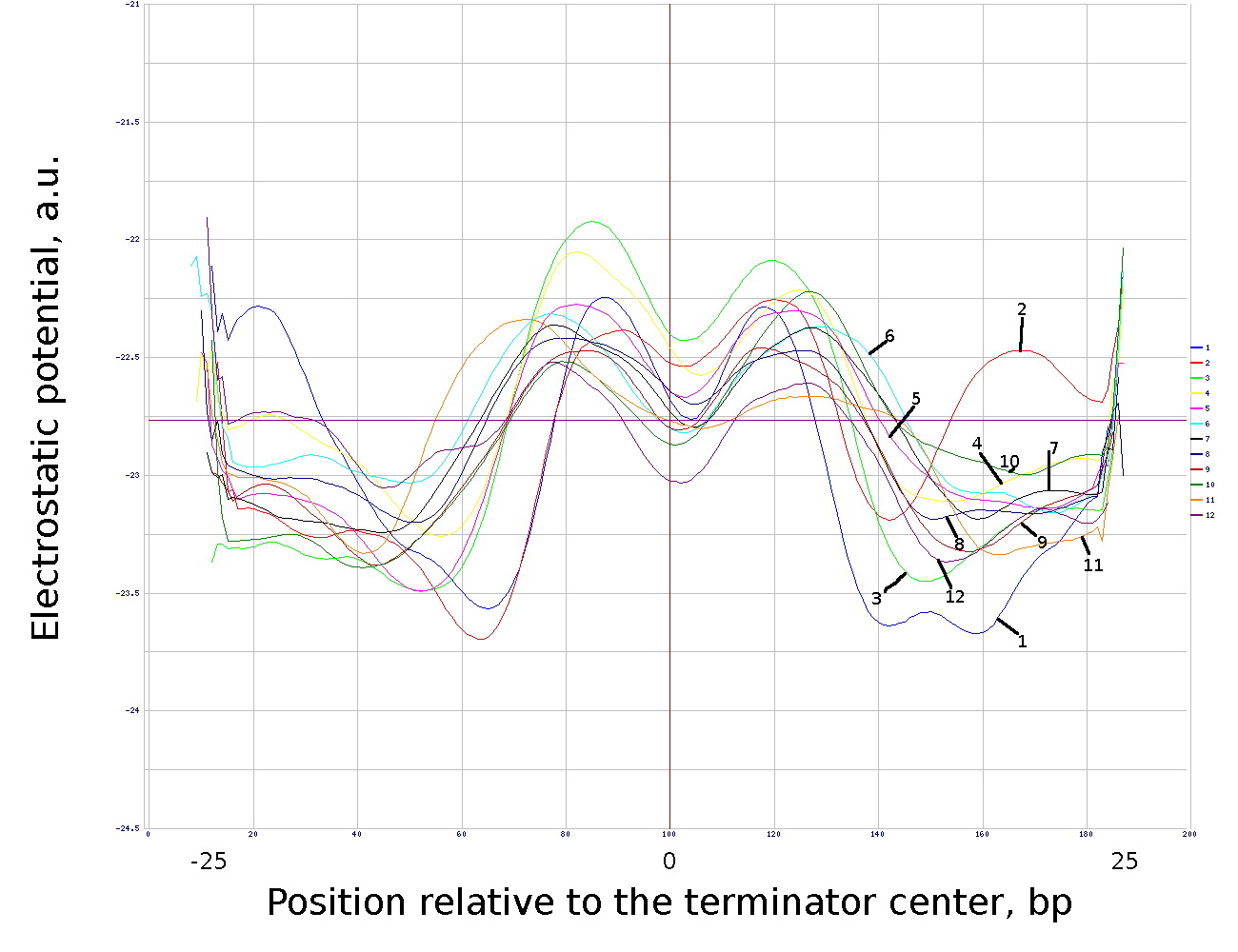Vol 49(2015) N 3 p. 339-347;
DOI 10.1134/S0026893315030115 
G.G. Krutinina, E.A. Krutinin, S.G. Kamzolova, A.A. Osypov*
Bacteriophage λ: electrostatic properties of the genome and its elements
Institute of Cell Biophysics, Russian Academy of Sciences, Pushchino, Moscow Region, 142290 Russia
*aosypov@gmail.com
Received - 2014-11-11; Accepted - 2014-12-17
 Bacteriophage λ is a classical model object in molecular biology, but little is still known on the physical properties of its DNA and regulatory elements. A study was made of the electrostatic properties of phage λ DNA and regulatory elements. A global electrostatic potential distribution along the phage genome was found to be nonuniform with main regulatory elements being located in a limited region with a high potential. The RNA polymerase binding frequency on the linearized phage chromosome directly correlates with its local potential. Strong promoters of the phage and its host Escherichia coli have distinct electrostatic upstream elements, which differ in nucleotide sequence. Attachment and recombination sites of phage λ and its host have a higher potential, which possibly facilitates their recognition by integrase. Phage λ and host Rho-independent terminators have a symmetrical M-shaped potential profile, which only slightly depends on the annotated terminator palindrome length, and occur in a region with a substantially higher potential, which may cause polymerase retention, facilitating the formation of a terminator hairpin in RNA. It was concluded that virtually all elements of phage λ genome have potential distribution specifics, which are related to their structural properties and may play a role in their biological function. The global potential distribution along the phage genome reflects the architecture of the regulation of its transcription and integration in the host genome.
Bacteriophage λ is a classical model object in molecular biology, but little is still known on the physical properties of its DNA and regulatory elements. A study was made of the electrostatic properties of phage λ DNA and regulatory elements. A global electrostatic potential distribution along the phage genome was found to be nonuniform with main regulatory elements being located in a limited region with a high potential. The RNA polymerase binding frequency on the linearized phage chromosome directly correlates with its local potential. Strong promoters of the phage and its host Escherichia coli have distinct electrostatic upstream elements, which differ in nucleotide sequence. Attachment and recombination sites of phage λ and its host have a higher potential, which possibly facilitates their recognition by integrase. Phage λ and host Rho-independent terminators have a symmetrical M-shaped potential profile, which only slightly depends on the annotated terminator palindrome length, and occur in a region with a substantially higher potential, which may cause polymerase retention, facilitating the formation of a terminator hairpin in RNA. It was concluded that virtually all elements of phage λ genome have potential distribution specifics, which are related to their structural properties and may play a role in their biological function. The global potential distribution along the phage genome reflects the architecture of the regulation of its transcription and integration in the host genome.
genome elements, DNA, electrostatic properties, bacteriophage λ


